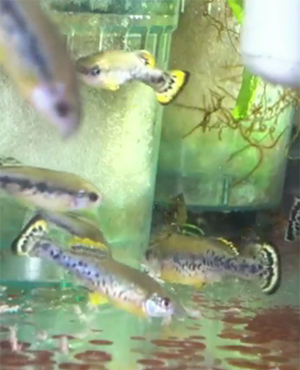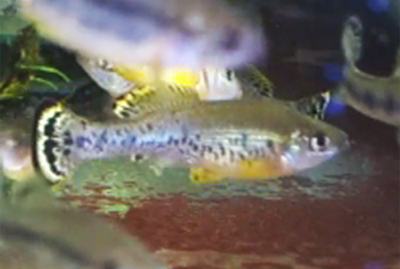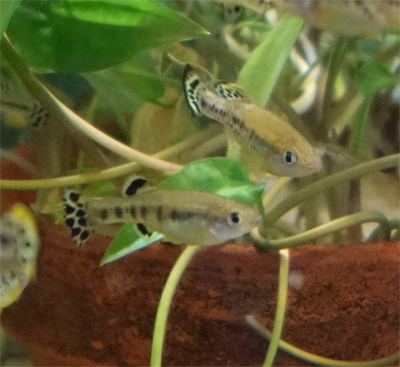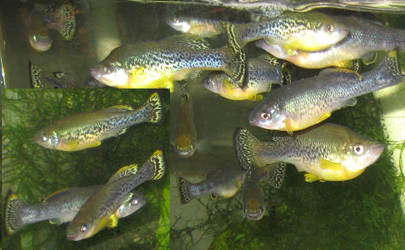|
|
Select Aquatics of
Erie CO. |
|
|
|
|
 |
 |
Water
Conditions- Not critical, but Require Effective Filtration
and Regular Water Changes
Behavior- A Peaceful Goodeid, but can defend itself
when picked on,
an active and hardy goodeid.
Breeding- 5-30 Large Young Every 2 Months
Size- One of the Larger Goodeids, 3-4 inches
|
 |
|
|
 |
Price-
$40 a pair
|
|
 |
|
|
|
|
|
|
|
|
| |
|
|
|
|
This beautiful goodeid has been
selectively bred from a line I
received about 5 years ago.
I have chosen breeders to emphasize the yellow and black
markings and though this is one
of the few goodeids that is not
threatened in the wild, it is
one of the prettiest fish in my
fishroom. This fish is also commonly called
one of the "Trout Goodeids".
When given proper filtration
they are also one of the hardiest
goodeids to keep. They look
like one of the U.S. natives, but only reach 4 inches. They
are a good community fish, but
can hold their own against larger tank mates, and live well
together in a species only tank.
They are very hardy with adequate
filtration, and once they get
going, a colony will increase
in size. The newborn fry
are very large, but may still be eaten by the largest adults.
Gestation
is the same as with all goodeids
at about 60 days when between 5 and 15 young are born,
depending on the age and size of the female. The fry will
take baby brine shrimp and
finely
ground dry food right away. More information
Here.
Back
to Previous Species
To Next Species
|
 |
|
|
| |
 |
|
|
|
These have become one of my
favorite fish to work with. One interesting note:
These have been selectively bred here since 2004. Females
were drab with
few markings on sides and some speckling in the caudal. Anal and
dorsal fins
were generally clear. Through selecting for markings and yellow
color in males,
females began showing anal and dorsal fin markings- but they
were consistent
and distinctively different than the males! As a result, being a
fish that is
difficult to sex when young, the beginnings of the black bar
markings seen in
females now makes them easy to sex when younger. |
 |
|
|
|
|
|
|
|
 |
|
|
|
This pic shows the new female
markings revealed through selective breeding.
The
male to the right has speckles along his sides and spotted
markings in
the
anal (Not seen) and the dorsal fins, as well as finer speckling
in the
caudal.
The female on the left possesses broader spots, no speckling on
the
sides,
but most notably, solid black bars across the anal and dorsal
fins.
All of
the females with good markings posses those bars, whereas the
males
do not.
Those bars are not seen on the original wild population.
The pic
above this one is of a young male, and an older female can be
seen in
the mid
right portion of the top photograph.
|
 |
|
|
|
|
|
|
|
|
|
|
|
|
|
|
|
|
|




